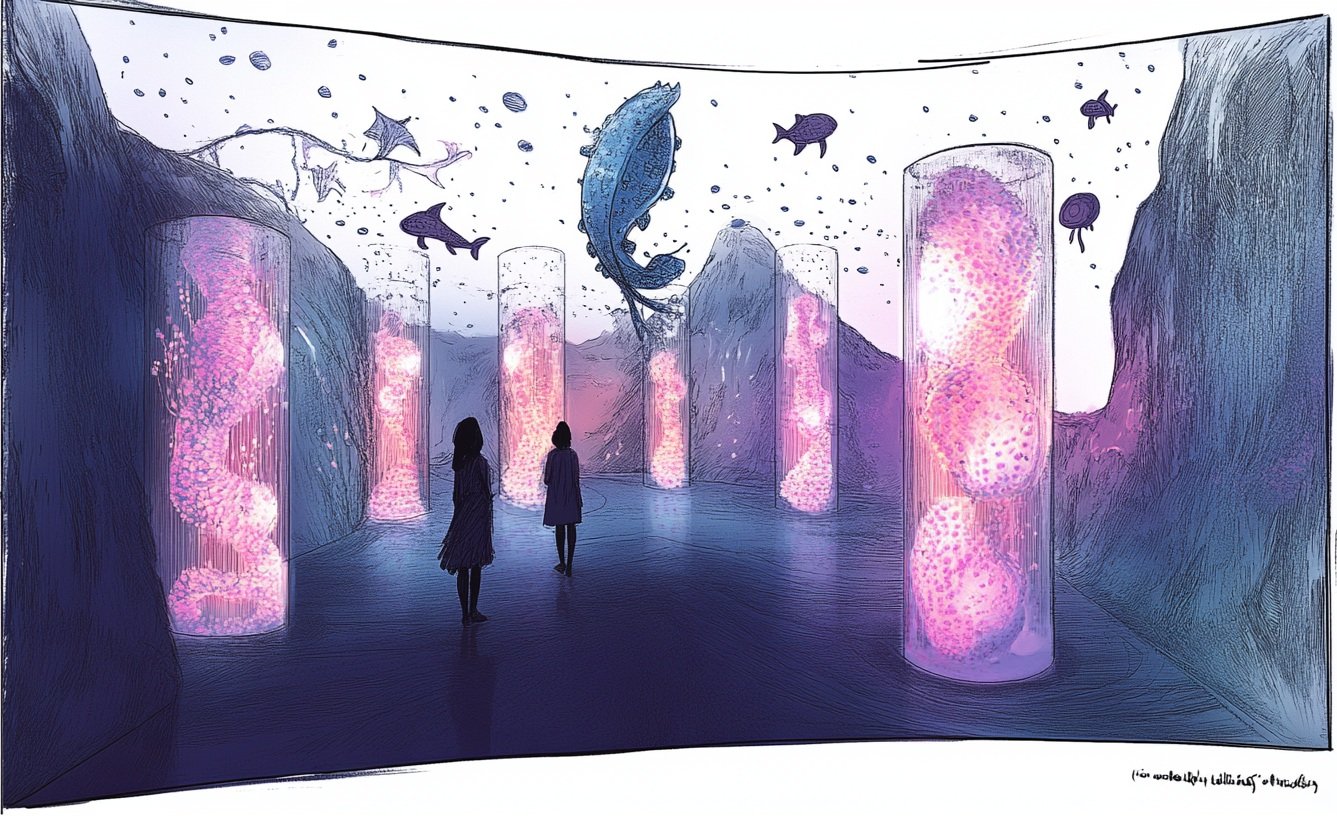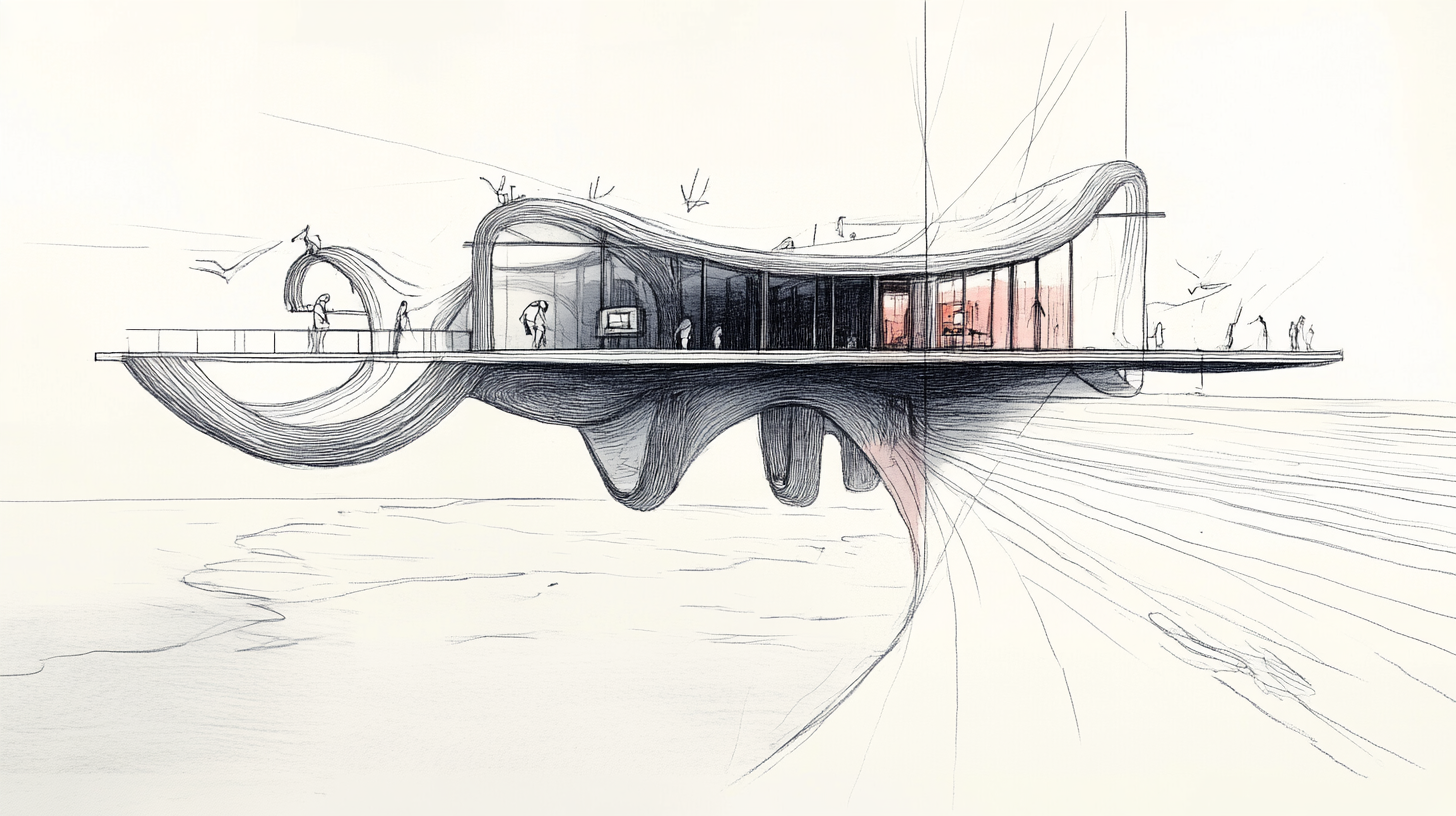Why Designers Still Hold the Power when using AI
I’ve started sketching much more with the use of AI
We are living in an era where creative tools have never been more accessible. Generative AI platforms like Midjourney, RunwayML, ChatGPT image generator and now the new Gemini Flow have brought high-level visualization capabilities to anyone with a keyboard and curiosity. The barriers to entry, once defined by software costs and technical skill, have flattened. We now all pay the same subscription fees. We can all prompt the same models. The tools don’t discriminate.
But here’s the truth that rarely gets discussed: equal access does not mean equal outcomes. In a world where everyone can generate, those who can guide the creative vision still lead. And those people are design professionals.
When Everyone Has the Tool, What Becomes the Differentiator?
Clients today are arriving at design meetings armed with Midjourney-generated concepts. Sometimes they're excited, sometimes overconfident. There’s a growing belief that ideation is no longer the domain of trained professionals, that it’s been democratized.
And yes, in part, that’s true. We can all generate mood boards in minutes. We no longer need Photoshop fluency or 3D rendering experience to produce stunning images.
But what we still need, and will always need, is judgment. A trained creative mind knows when something looks right, feels right, and most importantly, when it can actually be built. Ideation without feasibility is not design. It’s fiction.
Sketching remains the ultimate power when it comes to creative control using AI. So keep sketching!
Designers vs. Prompters
In my experience teaching professionals ranging from individuals with non-design background to experienced director-level creatives, the difference in AI outcomes is striking. Designers tend to approach generative AI as an extension of their workflow. Non-designers often treat it as a magic trick. Where designers prompt with intent, non-designers often leave it to chance.
This results in what I call the “Surrealism Gap.” Without technical and spatial knowledge, outputs quickly drift into visual hallucinations: floating furniture, impossible shadows, disconnected narratives. They may look impressive at first glance but fall apart under the scrutiny of real-world constraints.
Designers, on the other hand, know how to anchor AI. They add structure to the output. They align creative direction with practical constraints, scale, material, lighting, flow, storytelling. They iterate not for beauty alone, but for clarity, strategy, and buildability.
Tech inspired designers approach generative AI as a support system to achieve new height
AI’s Rise in Film and Architecture
The distinction between tool access and creative direction becomes even clearer when we look at the pioneers who are reshaping industries using AI as an accelerant.
In film, Shy Kids studio created the short film "Air Head" in 2023 using Runway’s AI video generation and compositing. What made the film stand out wasn't the tech. It was the direction, storytelling, pacing, and emotional nuance guided by professionals who understood cinema. Speeding ahead to 2025 AI Film Studios like the Dor Brothers have been laying out the creative excellence with their attention to detail in AI filmmaking.
In architecture, architects like Tim Fu have begun incorporating generative AI not as a visualization tool, but as a co-creation partner; one that helps test complex form-finding algorithms, streamline conceptual exploration, and accelerate early-stage ideation with real-world parameters built in.
Studios like ONTWAI, Refik Anadol Studio, and SpaceForm are pushing boundaries in data-driven experience design, blending generative visuals, storytelling, and space-making into coherent, highly immersive environments. But it’s not the tools creating magic, it’s the design vision behind them.
AI Empowers Everyone, But It Amplifies Professionals
Let’s acknowledge a truth that’s often ignored: AI does empower non-creatives. It levels the playing field for those who don’t draw, can’t render, or lack visual sensibility. It can bridge the gap between idea and image. That’s something to celebrate.
But it’s not the same as expertise.
Just like Canva didn’t make everyone a great graphic designer, generative AI doesn’t make everyone a visionary. The professionals who know how to design, who understand narrative structure, color theory, spatial logic, and emotional pacing, will always be one step ahead.
Designers move from: “I make things look good” → to → “I craft visions that resonate, work, and endure.”
This shift is what defines the next generation of creative leadership.
Your unique talent plays a huge role when using AI. It doesn't get lost in generic output, when you are the one in control keeping it real and buildable.
Why Designers Should Feel Empowered
I want to speak directly to the creative professionals in my field. Those working in exhibition design, experience strategy, storytelling, brand spaces, or immersive environments. Your place is not being replaced. It is evolving.
Your role is no longer just about producing outputs, it’s about curating outcomes. It's about orchestrating creativity across disciplines and now, across human-machine collaborations.
Clients need you more than ever, not just for execution, but for direction. They need you to tell them what’s possible. To connect emotional impact with spatial strategy. To translate vague Midjourney prompts into meaningful moments that move people.
In this new age, creative direction is the commodity. Not software skills. Not access. Not even speed.
Why This Topic Speaks From The Heart
It is my ambition to empower design professionals not only to find their place in this changing field but to achieve creative independence by elevating how they think, work, and transform their creative ability to envision a process that sets them apart and pushes them forward.
I believe deeply that when designers pair their unique, hard-earned skills with AI processes, they don’t just streamline their workflow, because they actually expand the boundaries of what’s creatively possible. They become curators of vision. Directors of outcomes. Architects of experiences that haven’t yet been imagined.
We are still early in this transformation. The creative playing field is malleable. And those with the courage to lead, to experiment, to guide, and to shape, will be the ones who redefine the future of design.
"When designers pair their unique, hard-earned skills with AI processes, they don’t just keep up. In essence they push boundaries, because we are the ones shaping a still-malleable future in this level-playing design field by defining and elevating creative approach."
— Marlene Emig
Your creative expression and style are fundamental to pairing AI with your workflow.





